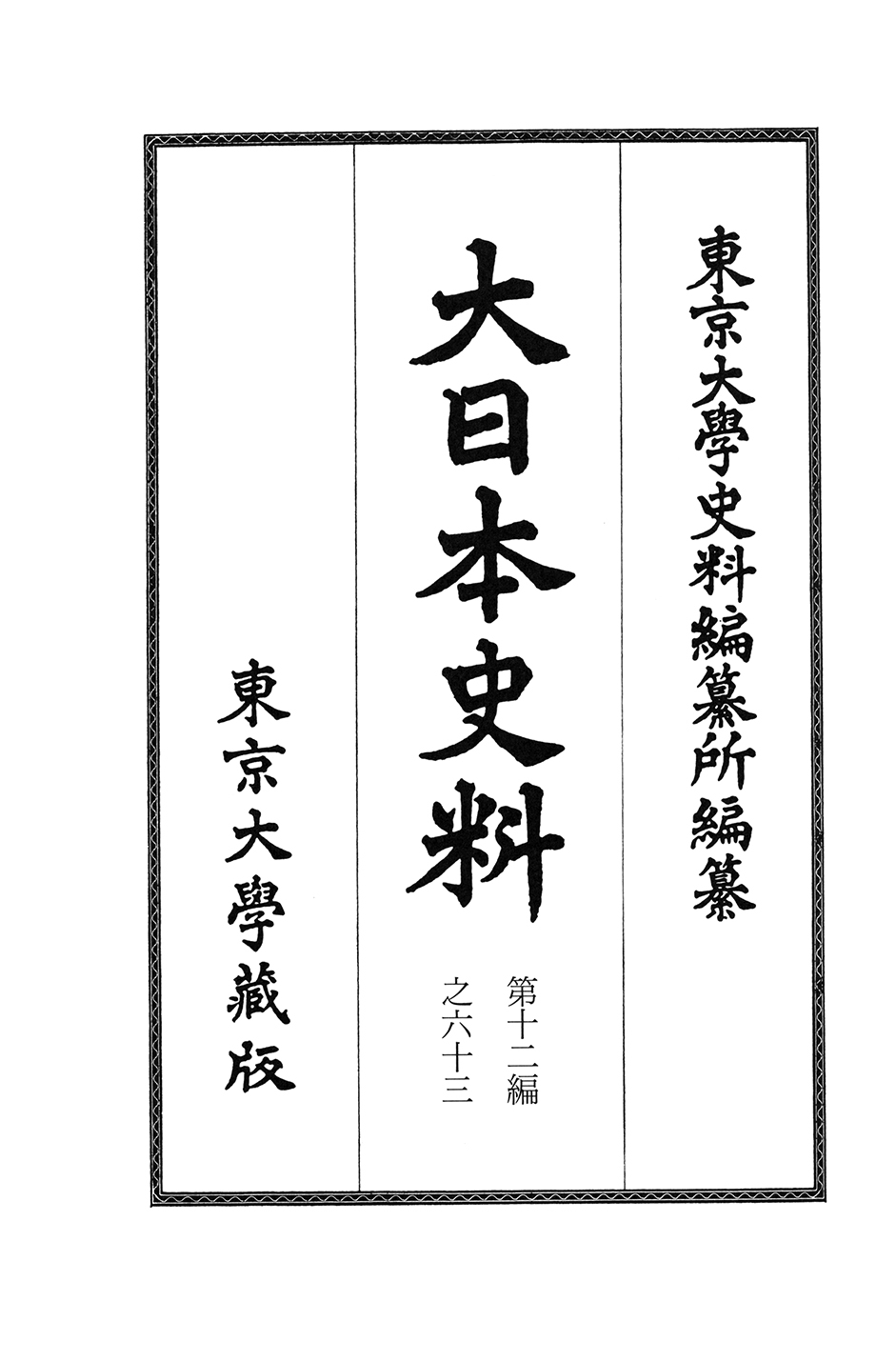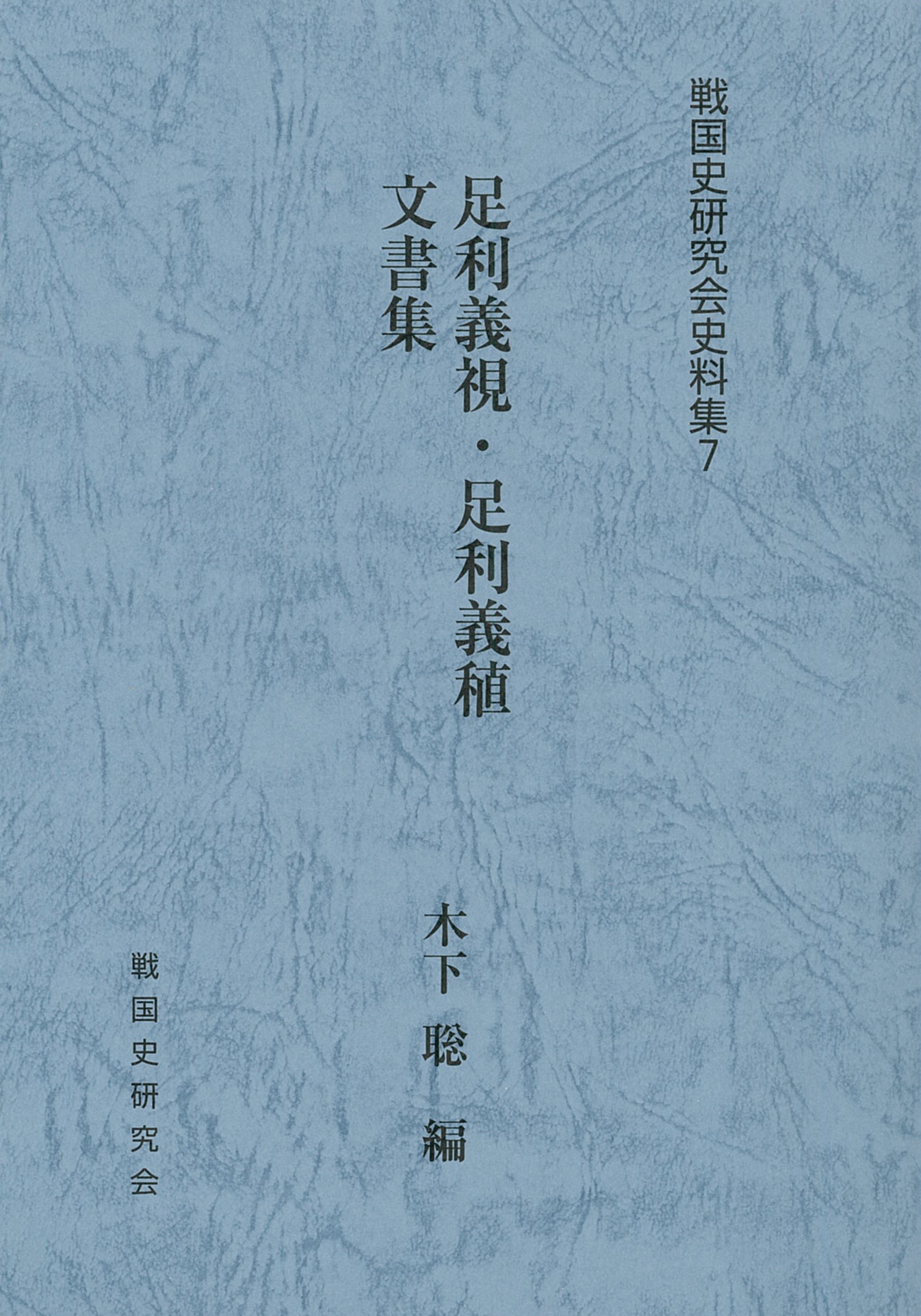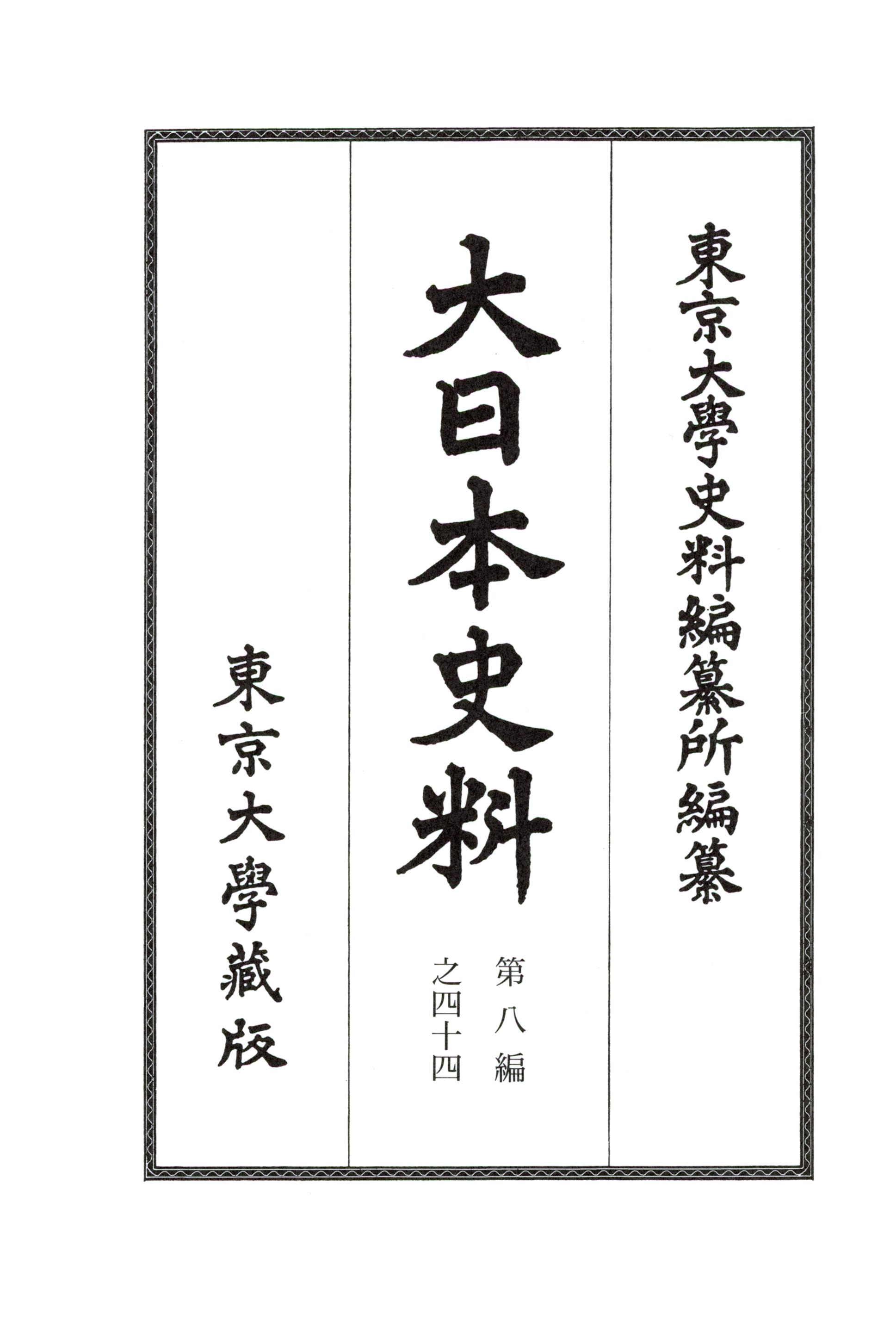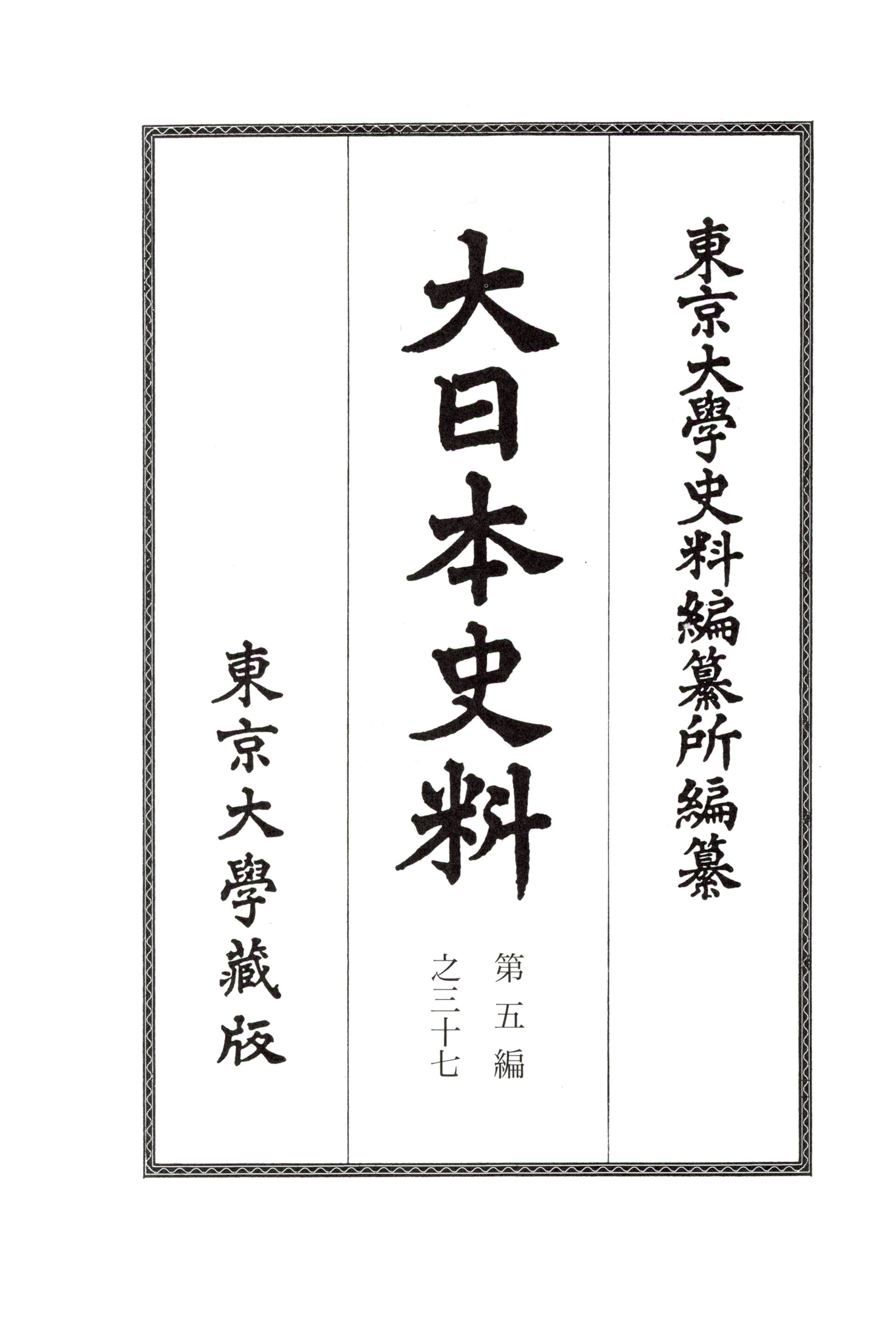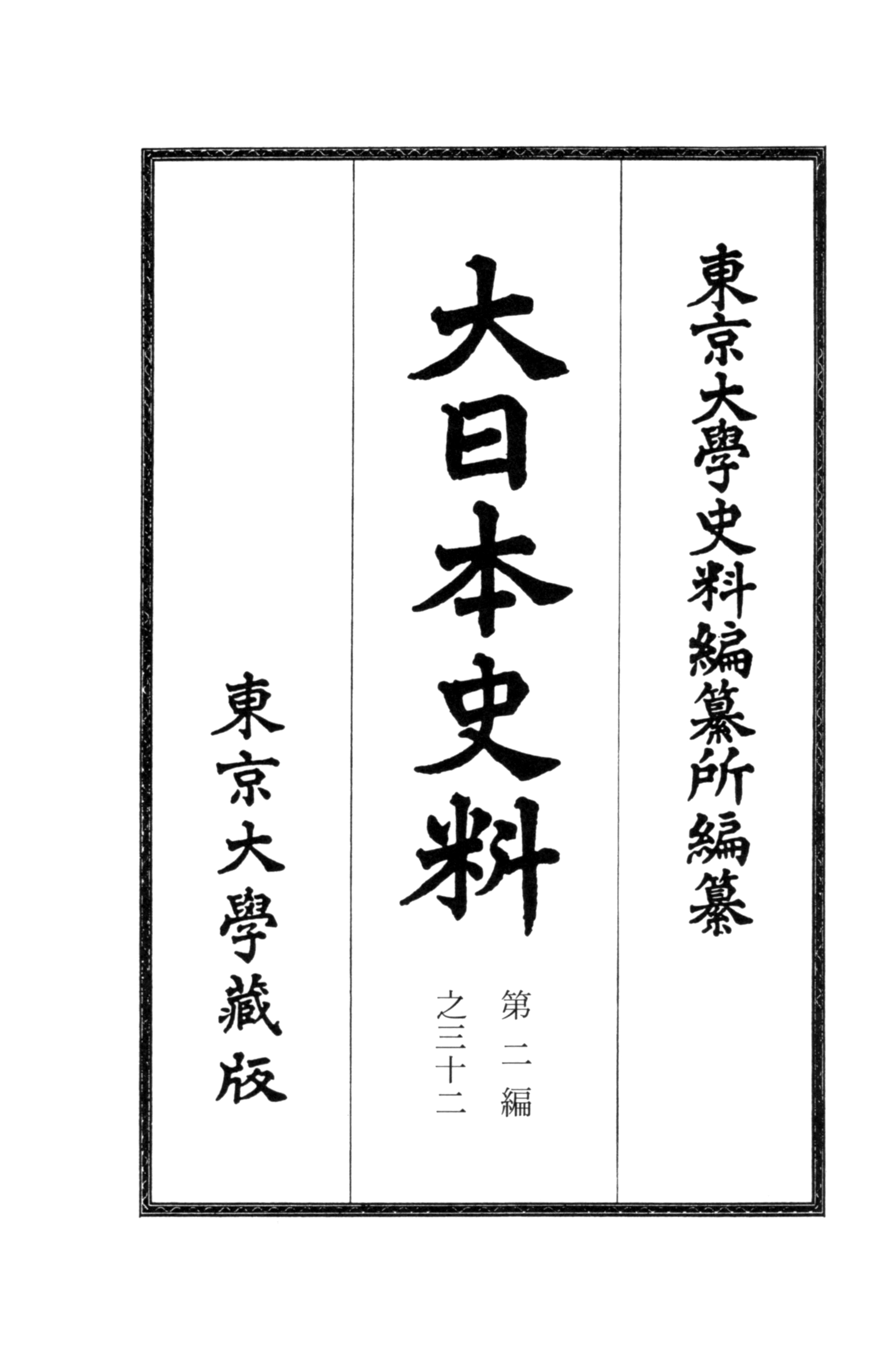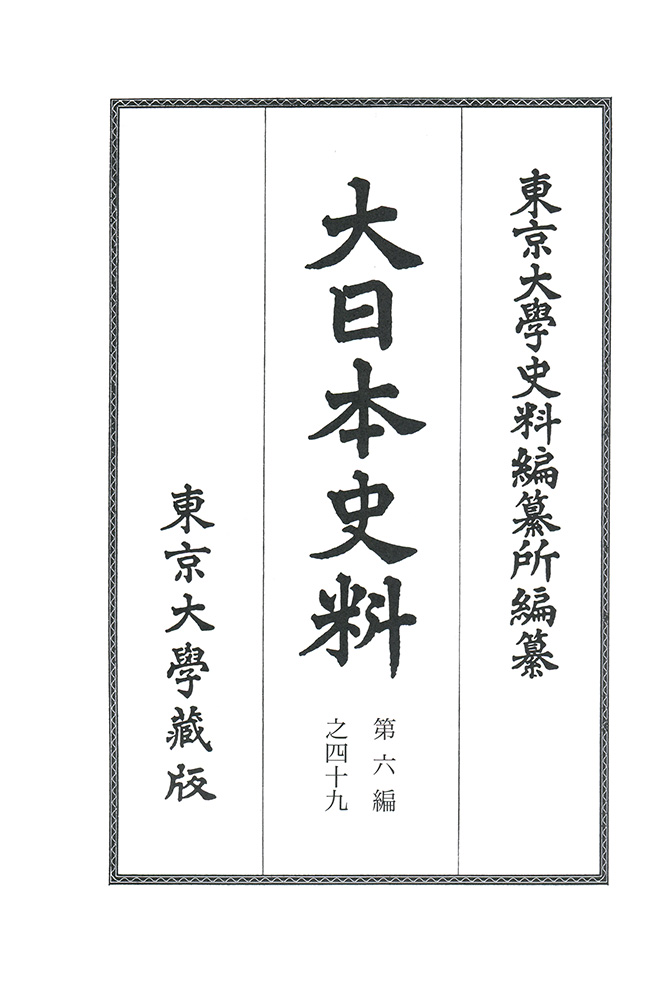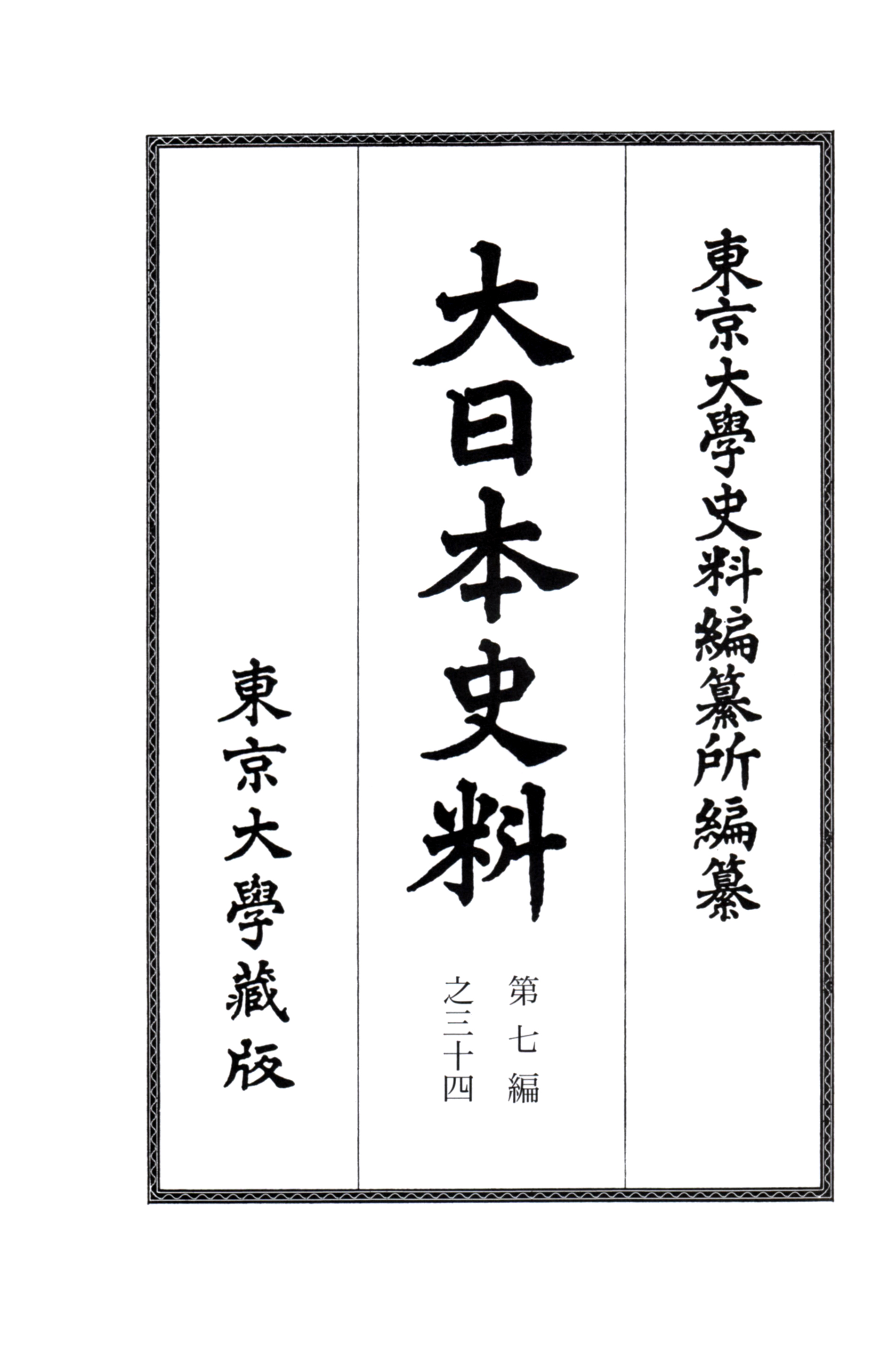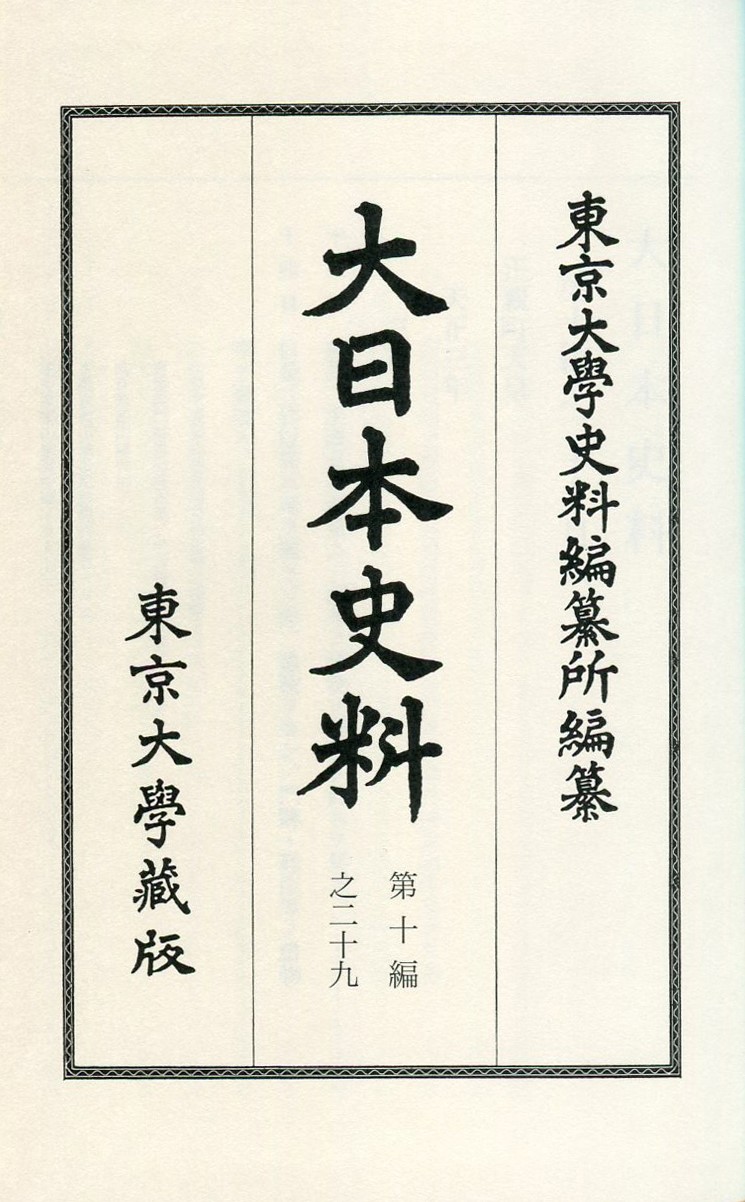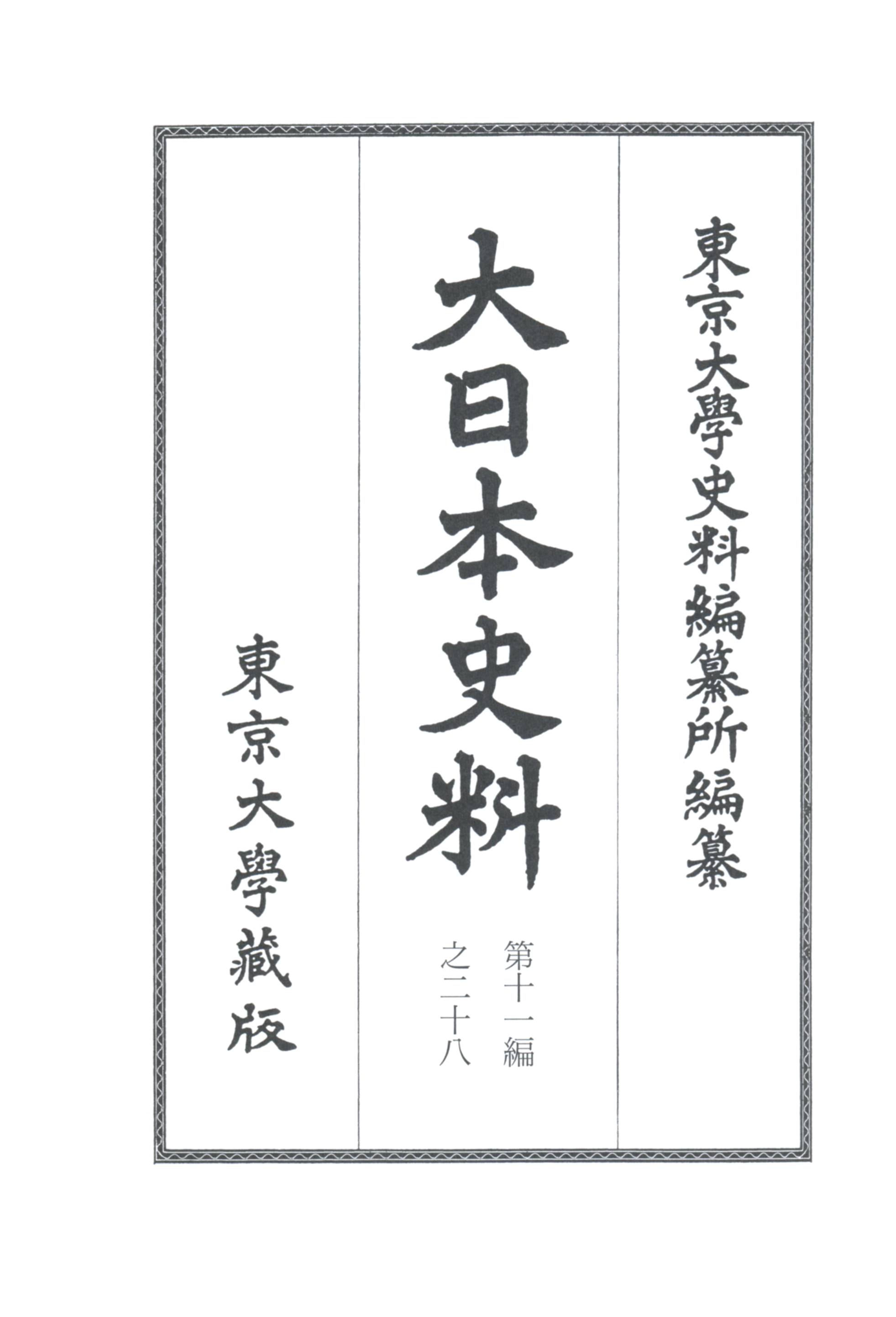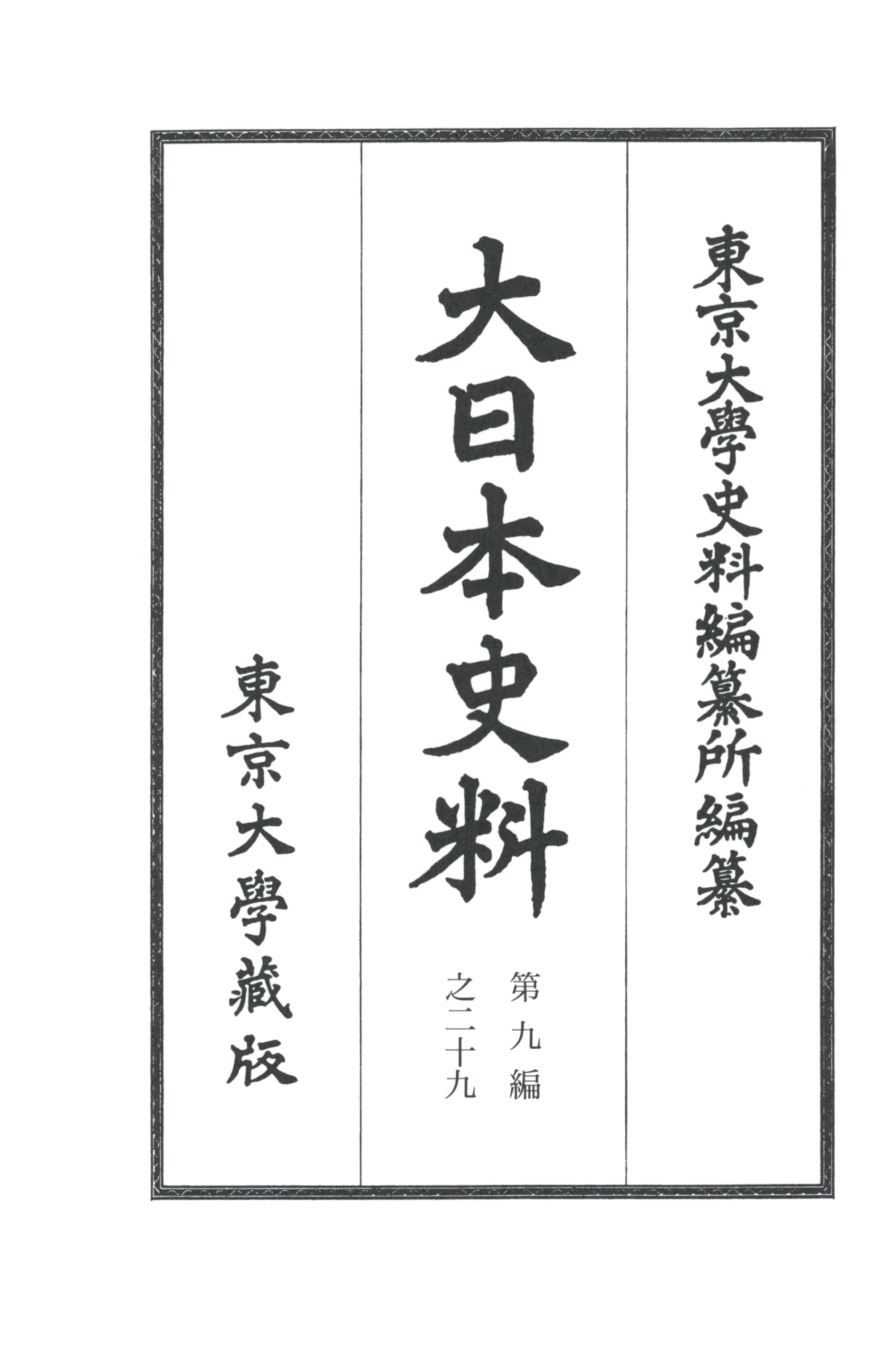
Title
Dai-Nihon Shiryo: Dai 9 no 29 (Chronological Source Books of Japanese History: Volume 9, Number 29)
Size
314 pages, A5 format
Language
Japanese
Released
June 30, 2021
ISBN
978-4-13-090429-2
Published by
University of Tokyo Press
Book Info
See Book Availability at Library
Japanese Page
Chronological Source Books of Japanese History is one of the collections of source materials on Japanese history being compiled and published by the Historiographical Institute at the University of Tokyo. Starting from 887, when the last of the Six National Histories breaks off, it covers about 980 years to the Meiji Restoration in 1868 and is divided into sixteen parts. After vol. 1 of Part 6 and vol. 1 of Part 12 were published in 1901, work began on other parts up to Part 12, and apart from Part 4, which has been completed, volumes in other parts continue to be compiled and published.
As for the format of each volume, the collected sources (which serve as material for historical research) are arranged by events, and an outline of the event in question is followed by the relevant sources, which are transcribed as they are, and the events are arranged in chronological order. However, if the day on which an event took place is not known, that event is placed at the end of the corresponding month, and if the month in which an event took place is not known, it is placed at the end of the corresponding year. In addition, sources that are difficult to organize into events are placed at the end of each year as “Miscellaneous Materials” and classified under headings such as “Shinto Shrines,” “Buddhist Temples,” “Prominent Families,” “Scholarship, Arts, and Entertainment,” “Landholdings,” “Annuals Taxes and Corvée Labour,” etc.
Part 9 covers the Sengoku period from 1508, when Ashikaga Yoshitane (then known as Yoshitada), the tenth Muromachi shogun who had been deposed by Hosokawa Masamoto, entered Kyoto together with Ōuchi Yoshioki and others, drove out the eleventh shogun Ashikaga Yoshizumi, Hosokawa Sumimoto, and others, and was reinstated as shogun, to 1568, when Oda Nobunaga gave his support to the fifteenth shogun Ashikaga Yoshiaki and began to show signs of moving towards Kyoto.
Vol. 29 of Part 9 covers the period from the 1st of the ninth month of Daiei 4 (1524) to the end of the same year and includes undated events that occurred during this year. In the Kinai region, Tanenaga of Hatakeyama Masanaga’s faction of the Hatakeyama family fought in Kawachi with Yoshitaka of Hatakeyama Yoshinari’s faction, and local warriors from Yamato such those of the Tsutsui family also participated in the fighting. Meanwhile, in the Kantō region Hōjō Ujitsuna, who had invaded southern Musashi from Sagami, made peace with Uesugi Norifusa, the shogunal deputy in Kantō, and then with Takeda Nobutora of Kai province. The imperial court hosted a hundred-poem poetry party in memory of the 300th anniversary of the death of Jien, a Tendai abbot of the early Kamakura period, with funds donated by Prince Sonchin, a son of the emperor Go-Kashiwabara who had become a monk. In the entry for the 8th of the twelfth month, there is a section on the death of Kikuin Zuitan, a monk of the Sōtō sect and the second abbot of the temple Eishōin in Kai, and many of his sermons to monks and laypeople have been included as biographical source material. These include not only sermons to monks of the same Sōtō sect but also sermons given to monks from other provinces and other sects, to members of the Takeda family and their retainers, and to all the clergy and laity in Yatsushiro district in Kai, as well as templates for his monthly sermons, and it is evident that Kikuin played an important role in the spread of the Sōtō sect. The undated items at the end of this volume include, for example, an account of an embassy sent to the Korean Chosŏn dynasty by Sō Morinaga, governor of Tsushima, which has been taken from the Veritable Records of the Chosŏn Dynasty.
In order to compile and publish volumes of the Chronological Source Books of Japanese History, it is necessary to exhaustively investigate and collect source materials and then sort through them and study them. With the understanding and cooperation of owners, holding institutions, and so on, the Historiographical Institute has since the Meiji era been continuously investigating and collecting source materials, which have been either hand-copied or photographed. Basic tasks such as preparing tables of contents and indexes are also continually being carried out by full-time and part-time staff members, even though they may not be directly related to the volumes in which they are involved. In recent years use is also being made of databases, and these too are gradually being made publicly accessible separately from the publication of individual volumes.
(Written by WATANABE Masao, Associate Professor, Historiographical Institute / 2021)



 Find a book
Find a book


